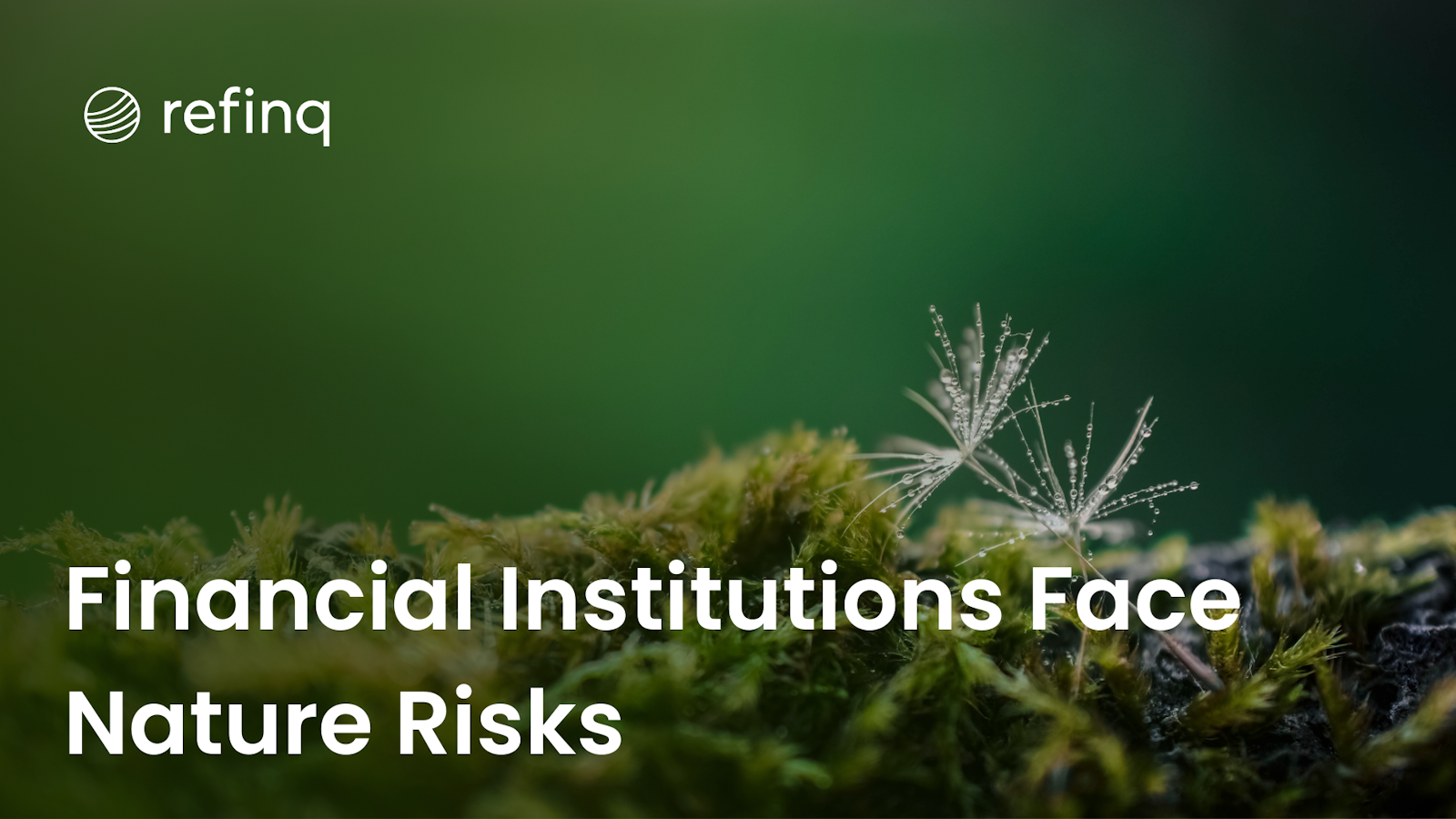

Nature-related risks are rapidly emerging as critical concerns for financial institutions globally. As climate change and biodiversity loss accelerate, businesses and investors are increasingly exposed to economic instability and operational vulnerabilities. Platforms like refinq offer cutting-edge solutions to help institutions navigate these challenges. These tools enable organizations to assess and mitigate risks, ensuring regulatory compliance and sustainable growth.
This article delves into the complexities of nature-related risks, their implications for financial institutions, and the strategic measures organizations can adopt to address them effectively. Read more about nature-related risks.
Understanding Nature-Related Financial Risks
Nature-related risks encompass environmental challenges that directly or indirectly affect financial systems. These risks include:
Physical Risks: Damage to assets and infrastructure due to natural disasters or extreme weather events.
Transition Risks: Financial losses from shifting to nature-positive or sustainable economies.
Liability Risks: Legal or regulatory consequences arising from environmental harm or non-compliance.
(Explore the conceptual framework for nature risks).
The interconnection between natural systems and economic activities means that disruptions in biodiversity or ecosystems can ripple through supply chains, increase operational costs, and destabilize markets. A recent report by the Financial Stability Board highlights that addressing these risks is essential for long-term financial stability.
Agriculture: Dependency on biodiversity for crop production makes the agricultural sector particularly vulnerable to nature-related risks.
Energy: Renewable energy projects rely heavily on ecosystem stability, with disruptions impacting operational outputs.
Real Estate: Properties in areas prone to floods, wildfires, or other natural disasters face significant devaluation.
(Learn how the financial sector is addressing these risks.)
Biodiversity loss contributes to resource scarcity, which disrupts supply chains and impacts global markets. This instability often translates into fluctuating asset prices and reduced investor confidence, further exacerbating financial risks.
(Explore policy considerations for addressing nature risks.)
Asset Devaluation: Properties and resources in high-risk areas face declining value.
Market Volatility: Biodiversity loss and climate-related events cause unpredictable market changes.
Increased Costs: Insurance claims and regulatory compliance lead to rising operational expenses.
(Learn about nature-related financial risks).
Data Gaps: Many institutions lack the necessary data to analyze and predict nature-related risks effectively.
Regulatory Pressures: Governments are implementing stricter environmental regulations, requiring better reporting and risk management frameworks.
Reputation Management: Firms not aligned with sustainability goals risk reputational damage.
(Understand how financial institutions manage risks).
Geospatial Data Analysis: Leveraging geospatial tools to identify risk-prone areas and assess asset vulnerabilities.
Scenario Planning: Conducting stress tests under various environmental scenarios to plan for potential impacts.
Portfolio Diversification: Reducing exposure to high-risk sectors and regions through diversification strategies.
(Read more about integrating nature-related risks into financial strategies.)
Platforms like refinq offer powerful tools for managing nature-related risks. (Explore refinq's portfolio solutions):
Real-time environmental assessments.
Predictive analytics for biodiversity and climate risks.
Compliance support with frameworks like TNFD and CSRD.
Nature loss disrupts resource availability, leading to:
Raw Material Scarcity: Biodiversity loss affects agricultural yields and resource extraction.
Infrastructure Vulnerabilities: Natural disasters damage essential transportation and production facilities.
(Read about supply chain risks).
Price Fluctuations: Resource scarcity causes commodity price volatility.
Investor Confidence: Markets with significant exposure to nature risks face reduced investor confidence.
Nature Risk Policies: Integrate biodiversity and ecosystem health into corporate policies.
Stakeholder Collaboration: Partner with governments and NGOs to address systemic risks.
Frameworks like the TNFD enable institutions to disclose nature-related risks transparently. These disclosures enhance stakeholder trust and align businesses with global sustainability goals.
(Explore practical considerations for financial institutions).
refinq is a state-of-the-art platform designed to help financial institutions manage environmental risks effectively. (Visit refinq). Key benefits include:
Advanced Risk Analysis: Utilizes over 2.5 billion data points to deliver granular insights.
Customizable Solutions: Offers tailored tools for portfolio impact assessment and benchmarking.
Regulatory Compliance: Aligns with frameworks like TNFD and CSRD to simplify compliance processes.
By integrating refinq, institutions can prioritize actions based on biodiversity and climate risks, ensuring a proactive and sustainable approach to nature-related challenges.
Nature risks pose significant challenges to financial institutions, influencing global supply chains, market stability, and operational costs. However, adopting strategic frameworks and leveraging innovative platforms like refinq can enable businesses to navigate these risks effectively, ensuring long-term growth and sustainability.
Nature-Related Financial Risks: Cambridge Institute for Sustainability Leadership
CFRF Handbook on Nature-Related Financial Risks for Financial Institutions (FCA)
How Businesses Address Nature-Related Financial Risks (World Economic Forum)
Practical Considerations for Financial Services Firms on Nature-Related Risks (BDO)